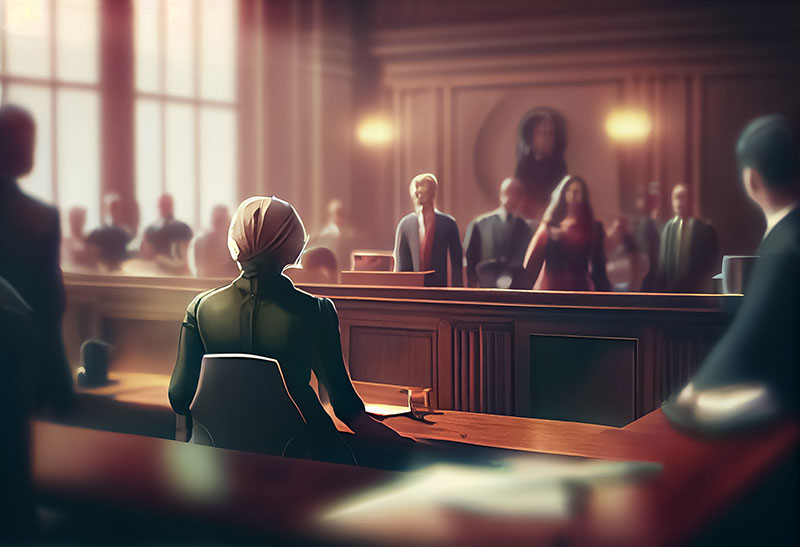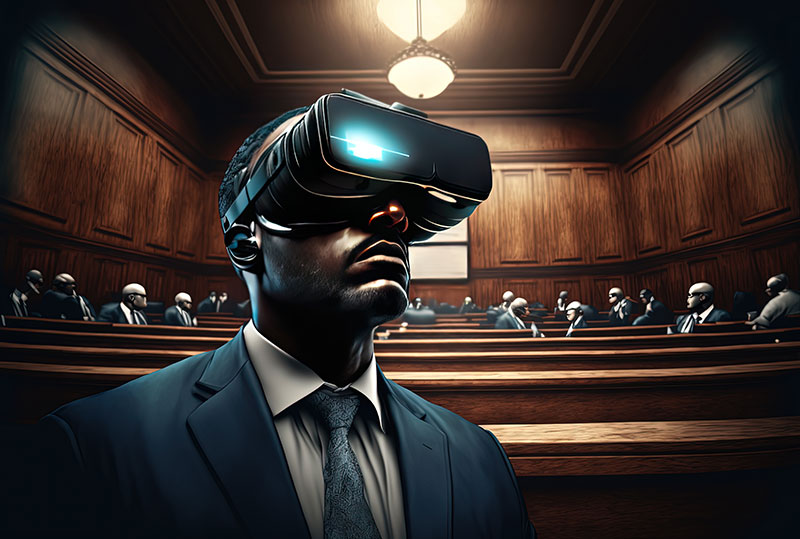Effective communication is one of the most essential elements of any courtroom trial. A well-prepared legal argument, backed by solid evidence and expert testimony, can still fall short if a jury cannot understand what is being presented. Complex data, technical terminology, and complicated sequences of events can easily overwhelm jurors. This is where courtroom illustration and trial graphics come into play. At LawFX, these visual tools are carefully crafted to improve jury comprehension and help attorneys deliver their message.
Visual communication has been a part of legal storytelling for years, but new technology and design approaches have taken this concept to a much higher level. With the help of courtroom visuals created by LawFX, attorneys can now simplify the most complex aspects of their cases and make them accessible to all jurors, regardless of background or expertise.
The Power of Visual Learning in Courtrooms
Studies in cognitive psychology consistently show that people remember visuals better than spoken or written words. Most people are visual learners, meaning they absorb and retain information better when presented visually. This insight becomes crucial in a courtroom where the stakes are high and jurors must decide based on their understanding of the facts.
Jurors are not always experts in medicine, engineering, finance, or other technical subjects. They rely on attorneys and witnesses to explain things to them in a way that makes sense. This is where LawFX excels. Using courtroom illustration and trial graphics, they turn abstract data and complex narratives into clear, concise visuals that leave a lasting impression.
What Is Courtroom Illustration?
Courtroom illustrations visually represent people, places, or events related to a legal case. They are created to assist attorneys in explaining what happened, how it happened, and why it matters. The goal is to clarify complicated elements of the case and help jurors see the big picture.
At LawFX, courtroom illustrations are designed in collaboration with legal teams, expert witnesses, and sometimes investigators. These illustrations must be accurate, fact-based, and court-admissible. They range from accident reconstructions and medical scenes to product defects or industrial processes.

Understanding Trial Graphics and Their Role
Trial graphics differ slightly from courtroom illustrations but often serve the same purpose. They include charts, timelines, infographics, and annotated visuals that structure an argument. Trial graphics are frequently used during opening and closing statements, expert testimony, and while summarizing facts.
LawFX combines illustration and trial graphics to support legal teams throughout the litigation process. Their work doesn’t just explain—it engages the jury. When used together, courtroom illustrations and trial graphics offer a comprehensive visual strategy that makes complex information easier to grasp.
How LawFX Helps Attorneys Communicate More Clearly
Attorneys often know what they want to say but struggle with how to say it in a way that resonates with the jury. LawFX bridges this gap by creating custom visuals that align with the attorney’s strategy. These visuals are not just inserted randomly into a presentation. They are thoughtfully designed to support arguments, highlight key evidence, and reinforce testimony.
LawFX ensures that each illustration and graphic fits seamlessly into the case narrative by working closely with trial attorneys and litigation consultants. Whether the goal is to demonstrate a breach in safety protocol or illustrate a sequence of events in an accident, the visuals are tailored to make that point.
Legal Services That Benefit Most from Visual Aids
Courtroom illustration and trial graphics are valuable across many legal practice areas. In personal injury cases, for instance, visuals can show how a fall occurred or how a car crash unfolded. In medical malpractice suits, illustrations of procedures and anatomy can help clarify what went wrong. For product liability cases, trial graphics often show the defective design or usage of the product.
Other beneficial areas include construction accidents, intellectual property disputes, commercial litigation, and criminal defense. LawFX has experience creating visuals in all of these areas. Their team understands the nuances of each field and knows how to present the visuals in a way that aligns with courtroom expectations.
LawFX’s Visual Development Process
Creating courtroom visuals is a detailed process that begins with a deep understanding of the case. LawFX first meets with the legal team to identify the most critical parts of the case that require visual support. They gather supporting materials such as expert reports, medical records, photographs, and investigative findings.
Using this information, LawFX begins to draft preliminary sketches or layouts. The legal team reviews these drafts and revises them as needed. Once the final visuals are approved, they are formatted for use in the trial. This could include digital presentations, print boards, or animated sequences.
Throughout this process, LawFX prioritizes accuracy and legal defensibility. Their visuals are designed to inform and withstand scrutiny in court.

Improving Jury Engagement and Retention
Jury engagement is key in any courtroom. Jurors who are bored, confused, or overwhelmed are less likely to retain critical information. They may miss key points or fail to understand how case pieces connect. This can result in misinterpretations or decisions based on emotion rather than fact.
LawFX visuals solve this problem by keeping jurors engaged. A well-designed illustration or timeline can bring the courtroom to life, make technical testimony easier to follow, and make abstract numbers feel concrete. When actively engaged, jurors are more likely to remember details and make informed decisions.
Visuals That Meet Courtroom Standards
LawFX does not just create visuals—they create admissible visuals in court. This means they must follow fairness, accuracy, and expert validation rules. Any illustration or graphic used in court must be based on facts, supported by evidence, and free from exaggeration.
LawFX works closely with attorneys and expert witnesses to ensure that every visual is legally sound. They understand that even a small error in an illustration could lead to objections or disqualification, so their process is thorough and collaborative from start to finish.
Pre-Trial Uses of Courtroom Illustration and Graphics
While courtroom visuals are often associated with trial, they are just as applicable during the pre-trial phase. Attorneys use these tools during depositions, mediations, and arbitration to communicate with opposing counsel, clients, and third parties.
By using courtroom illustrations early in the legal process, attorneys can build a stronger foundation for negotiation. LawFX provides visuals that are flexible enough to be used in both formal and informal settings. Their graphics support the case at every stage.
Frequently Asked Questions
What is the difference between courtroom illustration and trial graphics?
Courtroom illustrations are visual depictions of events, processes, or scenes. Trial graphics include timelines, charts, and infographics that explain data or structure arguments. LawFX creates both to help legal teams improve jury comprehension.
Are LawFX visuals allowed in court?
Yes. LawFX designs visuals that are admissible in court. They work with legal teams and experts to ensure accuracy and compliance with rules of evidence.
How does LawFX ensure the accuracy of courtroom illustrations?
LawFX develops its visuals using detailed case materials, expert consultation, and attorney feedback. Every illustration is reviewed and revised until it meets the required legal standards.
Can LawFX visuals be used in non-trial settings?
Absolutely. LawFX visuals are used in mediations, arbitrations, depositions, and client presentations. They help attorneys explain their cases clearly in any legal setting.
How long does it take to create courtroom visuals?
The timeline depends on complexity. Simple graphics may take a few days, while detailed illustrations could take one to two weeks. LawFX works with legal teams to meet case deadlines.
Final Thoughts
Courtroom illustration and trial graphics have changed how legal teams present their cases. These tools are no longer a luxury. They are necessary for attorneys who want to communicate clearly and connect with jurors. In a courtroom setting, where complex ideas must be explained quickly and clearly, visuals make all the difference.
LawFX understands this need. Their team creates illustrations and graphics that align with legal strategies, support expert testimony, and engage the jury. Every visual is crafted with purpose, accuracy, and legal standards.
Improving jury understanding is not about simplifying the truth but making it accessible. LawFX helps attorneys do just that, with visuals that speak louder than words. For legal teams preparing for trial, working with a visual partner like LawFX is a step toward clarity, confidence, and success in the courtroom.


